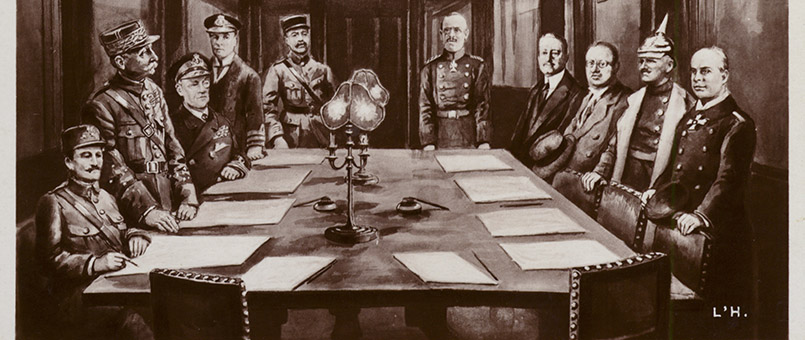
Lest we forget: the politics of war
On the 11th hour of the 11th day of the 11th month, the First World War ended. Each year we mark this day on the second Sunday of November: Remembrance day. With the centenary of the armistice in two year’s time, remembering the significance of the war and the lives lost is as important as ever.
The impact of World War I was felt throughout the world, and for the citizens of Great Britain, whether fighting on the battle front, helping the war effort from home or objecting to the war, there were political ramifications felt on every side – life, death, liberation or imprisonment. Explore the politics of war from the Bridgeman archive.
Propaganda
In need of more recruits, propaganda was used to encourage young men to join the army. Colourful, slogan-laden posters were printed, making the army look enticing, persuading those to rally together and fight for their country. Using patriotism, and guilt was a prevalent tactic. Posters, poetry, newspapers and film all encouraged enlistment, often for those not legally old enough. As many as 250,000 boys aged under 18 enlisted.
 |
 |
| “Come Lad, Slip Across and Help”, recruiting poster from World War I, pub. by The Parliamentary Recruiting Committee, London, 1915 (colour litho), English School, (20th century) / Topham Picture Source, Edenbridge, Kent, UK / Bridgeman Images | Britons: Join Your Country’s Army! by Alfred Leete First World War recruitment poster with a portrait of Field Marshall Earl Kitchener (1850-1916) (Lithograph and letterpress on paper) (see also 65836) / Imperial War Museum, London, UK / Bridgeman Images |
But propaganda was not exclusive to the British government, throughout the world citizens were encouraged to fight for their countries. View WW1 propaganda posters.
Women and war
While hostile at first, with the number of young men enlisted in the army, the government allowed hundreds of thousands of women to work during the war. Women began working in previously male-dominated industries – from public transport to weapons factories. With the vital roles women played throughout the war, a political and ideological shift began. This led to an amendment in the law where ‘respectable’ women were given the vote in 1918. It’s not too far a stretch to suggest that this shift paved the way to giving all women the right to vote in 1928.

Women working in a munitions factory in 1915 (litho), English School, (20th century) / Private Collection / Ken Welsh / Bridgeman Images
View women’s work during the war
Conscientious Objectors
During WW1 there were roughly 16,000 British conscientious objectors who refused to fight in the war as compulsory conscription laws came into effect. Objectors had to appeal, publicly, on moral or religious grounds. The white feather became an emblem of cowardice. This, along with political posters was used to embarrass those that weren’t enlisted, regardless of reason.

Smartly dressed conscientious objector being left behind by soldiers (colour litho), English School, (20th century) / Private Collection / © Look and Learn / Elgar Collection / Bridgeman Images
As the war continued, public resentment built up towards conscientious objectors, who were often made to take on medical roles with strict policies in place. They could be moved far from home with a soldier’s wage to ensure their sacrifices were more aligned to those in combat. Those who refused could be imprisoned.

Conscientious Objectors usefully employed: Men of the N.C.C. on a military road, illustration from ‘The Illustrated War News’, 23rd August 1917 (sepia photo), English Photographer, (20th century) / Private Collection / The Stapleton Collection / Bridgeman Images
Find out more
See more images and footage of World War I in the Bridgeman archive.
All images in this article are sourced from www.bridgemanimages.com. Contact the Bridgeman sales team (uksales@bridgemanimages.com) for more information regarding licensing, reproduction and copyright issues.
